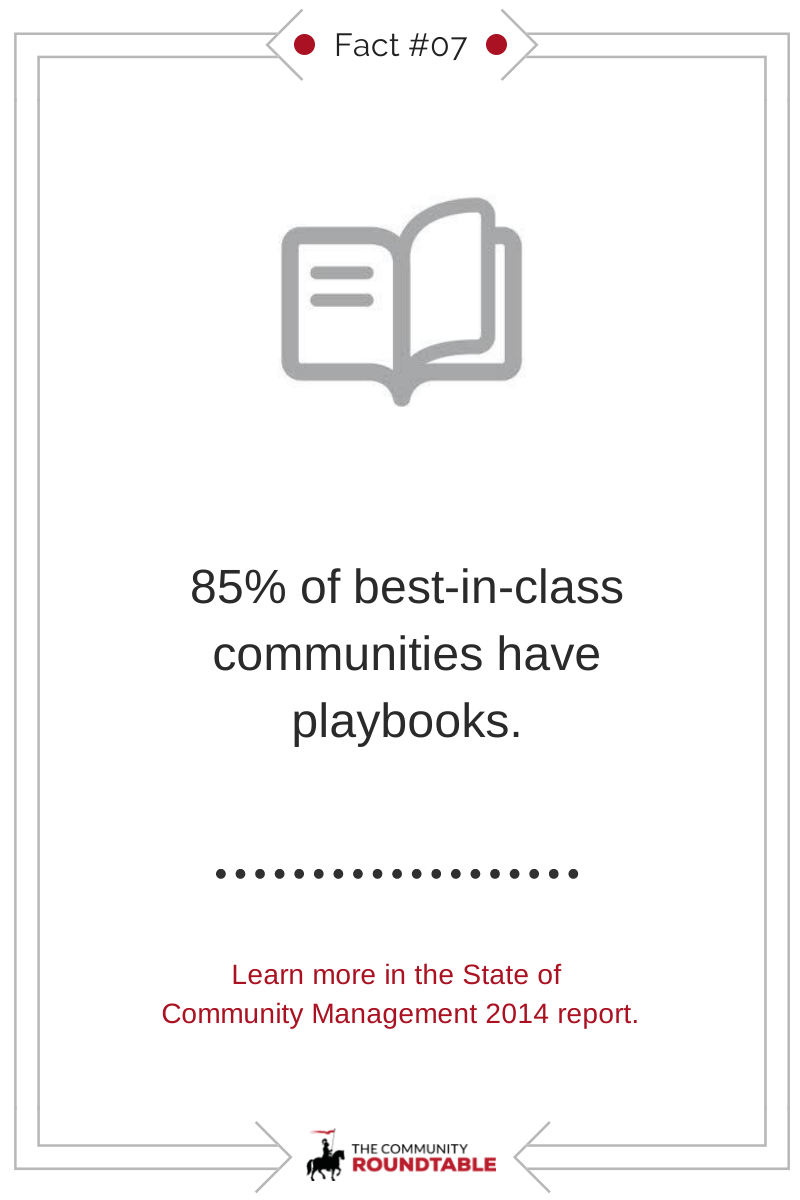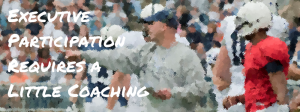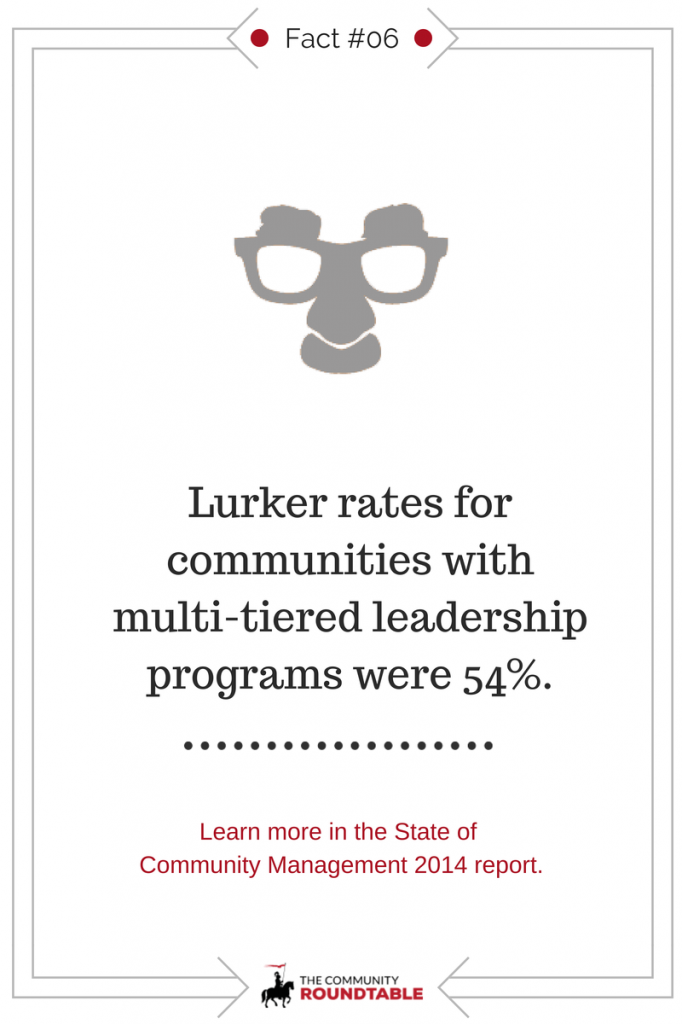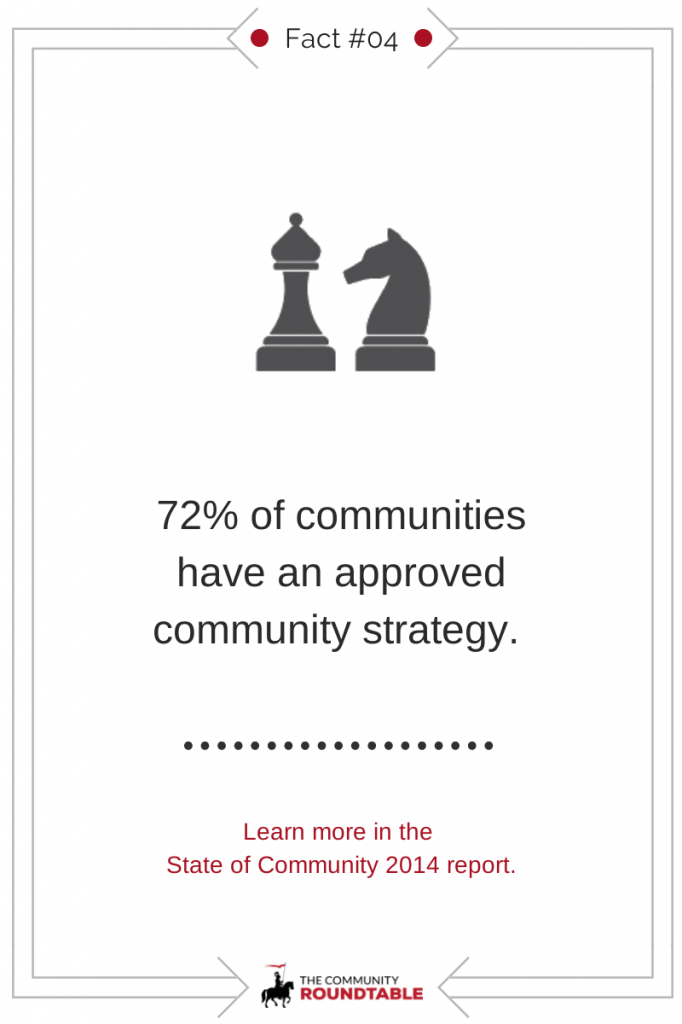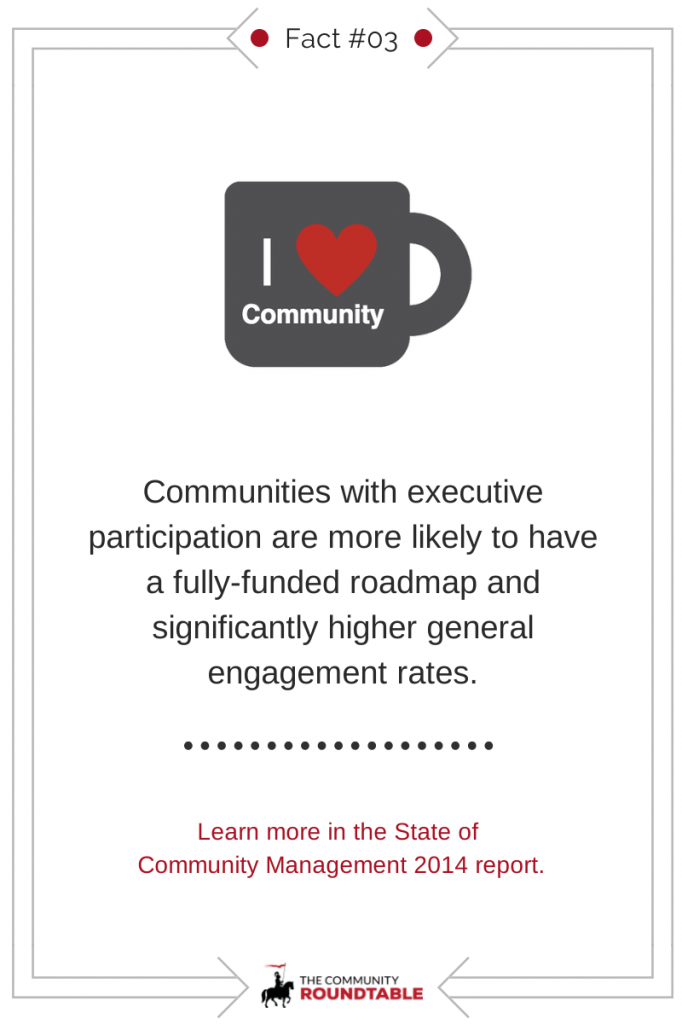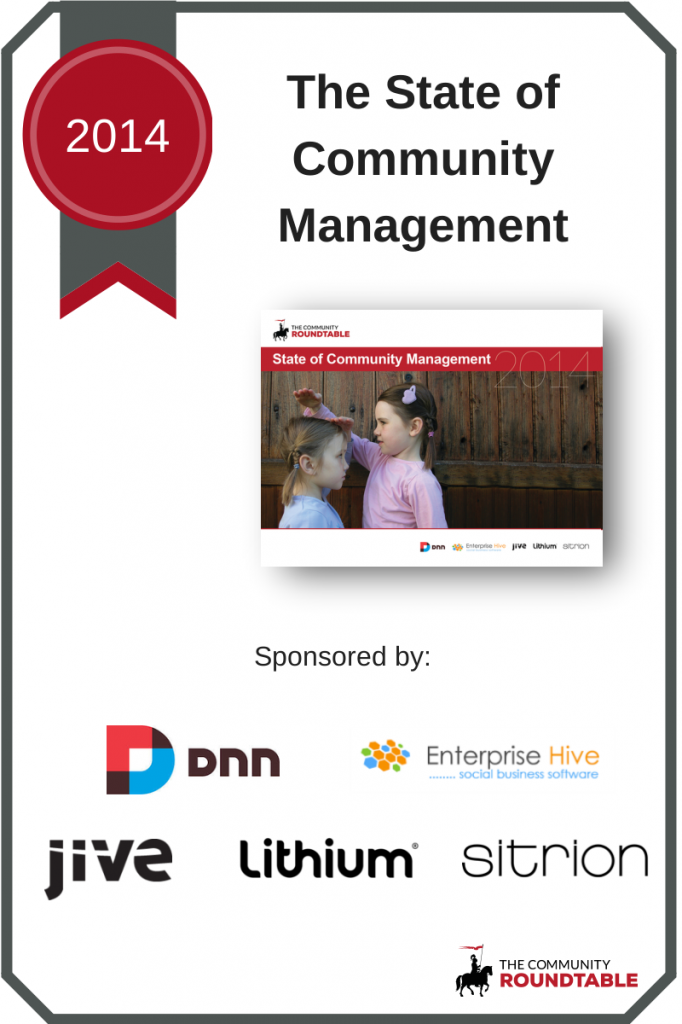By Shannon Abram, Relationship Manager at The Community Roundtable.
If you’re just getting started in community management you might find your self asking “why isn’t there a how-to manual I can consult?” Of course there are tons of great resources on the internet (from places like CMX Hub, FeverBee, SocialFish and of course right here at TheCR) – but sometimes it would be nice to just reach over and grab a community playbook.
For most best-in-class communities this isn’t just a dream. Through the State of Community Management 2014 research we found that 85% of best-in-class communities have a community playbook already.
Community playbooks are hallmarks of mature community programs.
In addition to enabling policies, best-in-class communities are more likely to document organizational standards for community management in community playbooks. Best-in-class communities are more than twice as likely to have playbooks as the average community. We have found that comprehensive community playbooks act as enablers to scale community management responsibilities.
Creating a Community Playbook
If you don’t already have a community playbook it can seem like a daunting undertaking. Our friends at Enterprise Hive shared five great tips for getting started. Tips include understanding that the playbook is meant to be an organic document and ensuring that the playbook structure has flexibility. Check out the whole post here for a great outline on how to get started.
You can review more findings related to community maturity in the State of Community Management 2014. This post is part of a series highlighting some of the most thought-provoking data from the SOCM 2014 – brought to you via a fun poster – perfect for sharing on Twitter, hanging at your desk, or printing out and waving around your next community strategy meeting.
Want even more community facts? Check out the full SOCM 2014 here:
—–
Looking to take your career in community management to the next level? 92% of members agree that TheCR Network supports and advances their personal and professional goals. Learn how our research, access to peers and experts, targeted content and exclusive concierge service can help you achieve your goals.
